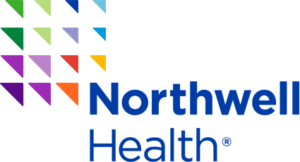One day in the not-so-distant future, Northwell Health could have a fleet of emergency drones that can quickly respond to an accident, an opioid overdose or even a terrorist attack, using telehealth to communicate with patients at the scene.
There’s still plenty of red tape to cut through, but the New York-based health system is already looking for ways to test those airways, according to Purna Prasad, Ph.D., the chief technology officer at Northwell Health.
“This is actually our next foray into telehealth,” Prasad told FierceHealthcare during an interview at the annual HIMSS conference in Las Vegas. “There may be places where there is no network connection, or there maybe be places where people just don’t have the wherewithal to have any type of mobile phone for two-way video conferencing. Can the drone provide that last mile of connectivity not only for audio, video and data, but also in delivering emergency care?”
That’s the question Northwell is trying to answer. Prasad envisions the following scenario: Someone trips and falls down the stairs in front of their apartment building in the middle of Brooklyn and breaks their hip. It’s 5 p.m. and the roadways are gridlocked because of rush hour traffic, blocking off ambulance access. Instead, Northwell dispatches a drone equipped with two-way audio and video capabilities and a dose of pain medication. An emergency physician provides instructions for the patient and some pain relief until EMTs arrive.
In other scenarios, those drones could also dispense an external defibrillator for someone experiencing cardiac arrest. Or a dose of Narcan for an overdose. Biosensors would allow physicians to remotely monitor the patient.
“It’s a huge opportunity at a fraction of the cost of flying a chopper,” Prasad says.
Using drones to support emergency care is still a relatively untested idea, although some medical researchers see unique potential for drones to transport biological samples, deliver medical supplies or respond to a large-scale disaster.
Historically, the use of drones in the U.S. has been limited by restrictions from the Federal Aviation Administration (FAA). But following a memorandum signed by President Donald Trump, the agency established the Unmanned Aircraft Systems (UAS) Integration Pilot Program. Through that initiative, the FAA plans to enter into agreements by May 7 with state and local agencies to pilot test the use of drones for various purposes, including public health.
“FAA is as nervous as we are,” Prasad says, emphasizing the need to identify air corridors that allow drones to safely travel. “This is something that is very new, especially in a place like New York City where you have two international airports.”
Source: FierceHealth

